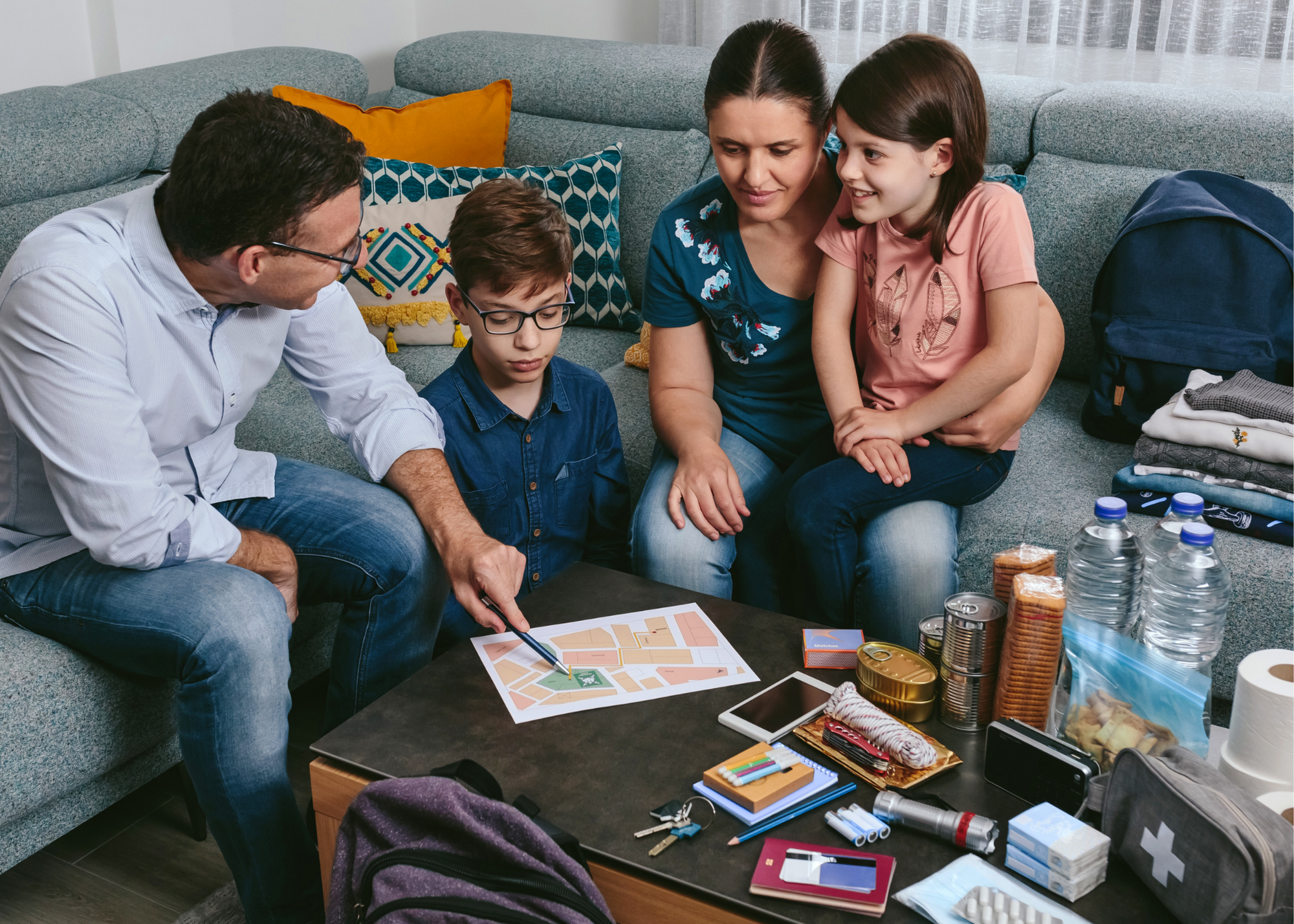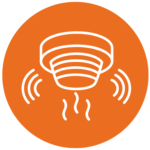Fire Safety for Individuals With Autism
September 21, 2022

For some people with autism, learning the concepts of fire safety can be difficult. Individuals with autism often need more individualized focused teaching strategies and may struggle with generalizing skills to real world events. We should not assume that someone with autism will easily understand why fire is dangerous, how to respond to a fire alarm, the purpose of a fire drill, or the actions to take in the event of a fire emergency. In addition, some characteristics of autism such as hyper-reactivity to sensory input could impact how someone with autism reacts during a fire emergency.
 Maintain Universal Safeguards for Your Home
Maintain Universal Safeguards for Your Home
All families should implement sensible precautions and items that increase fire safety in their homes.
- Fire extinguisher: Have a fire extinguisher on every level of the home.
- Smoke detectors: Install and maintain smoke detectors on every floor and near all rooms where family members sleep. If possible, make sure there is a smoke detector in your child’s room that is linked to the smoke detector in the parent’s room, so the parent is alerted to any fire danger threatening the child. (These are called “interconnected smoke detectors.”) If your child is sensitive to loud noises, talking smoke detectors are available and may be a good option.
- Fire ladder: If your bedrooms are on the upper stories of a building, consider purchasing a fire escape ladder. Ensure the ladder is kept in a safe place.
- Additional safeguards to consider:
- Purchase oven-knob locks
- Keep potential fire starters such as matches, lighters or candles hidden.
- Place decals and stickers in the window that alert firefighters that someone with autism lives in the home.
 Addressing Potentially Dangerous Behavior
Addressing Potentially Dangerous Behavior
People with autism often have fixated interests or exhibit repetitive behaviors, which could include potential fire hazards. For example, a child may have an intense interest in light bulbs and wires or an adult could repeatedly push microwave buttons.
- Use visual supports such as bold labels that have a stop sign or “X” picture on unsafe items. Teach your child what these symbols mean through an individualized teaching plan.
- Work with a Board Certified Behavior Analyst to address any restrictive interests and repetitive behaviors that may be unsafe. Individualized behavior plans are the best way to reduce these behaviors and replace them with safer alternative behaviors.
 Get To Know Your Local Firefighters
Get To Know Your Local Firefighters
Novel people and situations are often challenging for people with autism. During a crisis, an individual with autism may become easily overwhelmed and not follow important instructions or accept help from a firefighter. Interacting with your neighborhood firefighters in a non-emergency situation can have many benefits.
- Visit your local fire department so your child can be more familiar with the gear, uniforms, and vehicles. By ensuring that the firefighter is not a “stranger” and that their appearance is not unfamiliar or frightening may increase the likelihood that your child will respond positively to them during an emergency situation.
- You can work with your fire department to create a pre-incident plan that includes information specific to your child and the characteristics specific to their autism diagnosis. For example, your child may have a history of hiding in a “safe space” or putting on noise cancelling headphones. Each of these could make it more difficult for a firefighter to find and help your child in the event of an emergency. Work with your fire department to ensure that the firefighters know these special circumstances and can respond accordingly.
 Teach Fire Safety and Prevention Skills
Teach Fire Safety and Prevention Skills
People with autism often require more individualized teaching methods and repeated practice; learning only through natural opportunities such as school fire prevention week is likely not enough. Fortunately, there are a number of empirically-validated interventions that can be individualized to effectively teach necessary skills to individuals with autism.
- Since many people with autism are visual learners, instructional videos, social stories, read-a-louds, and visual supports (words or pictures) may help teach safety concepts such as what a fire looks like, what happens if we touch it, fire safety equipment, and who to call during an emergency.
- Break more complex activities down into smaller steps for practice. (i.e. safely making toast or cleaning out the dryer lint trap)
- Teaching safe vs. unsafe activities through repeated practice.
- Use naturally occurring opportunities to discuss and praise safe practices (“Thank you so much for standing back while mom is using the stove.”)
 Develop and Practice a Fire Escape Plan
Develop and Practice a Fire Escape Plan
- Due to other safety reasons, you may not want to teach your child how to leave the house independently. In that case, create and identify responsibilities for each family member, of how you will escort them out.
- Depending on the layout of your home and your child’s behavior, consider teaching them at least two ways out of every room. Several different ways to leave the house?
- Identify a central meeting place outside, such as the street sign in front of the neighbor’s house. Teach them when they hear the fire alarm or a parent yell out for them it means, “Time to go to the meeting place.”
- Frequently practice all parts of your escape plan. Model the behavior, rehearse it (practice it together providing prompts as needed), and offer feedback and behavior-specific praise.
 Teach Your Child Other Important Behaviors During a Fire Emergency
Teach Your Child Other Important Behaviors During a Fire Emergency
- If possible, teach your child how and when to dial 911.
- People with autism may go back inside to access a favorite object because they do not understand the danger. Teach them never to re-enter a home during a fire.
- If your child does not use or struggles with speech to communicate, teach alternative ways for them to call for help. For example, your child could learn to blow a whistle to call a firefighter to them during an emergency
Keeping your loved one with autism safe is your top priority. Adding additional home safeguarding measures, individualizing how you teach and practice fire safety skills, and proactively planning for a fire emergency with your child’s specific skills and needs in mind can help avoid a fire emergency and increase the likelihood that everyone will remain safe.
Additional Resources
National Fire Prevention Association has a section specific to those with disabilities
National Home Security Alliance offers advice on fire safety information for children
Scott, J., & Flood, B. (2020). Safeguarding Your Child with Autism. Bethesda, MD: Woodbine House.
September 26th Project provides resources to help families and their loved ones with autism prepare for and avoid a similar tragedy
Sparky.org offers kids activities to learn about fire safety

 Maintain Universal Safeguards for Your Home
Maintain Universal Safeguards for Your Home Addressing Potentially Dangerous Behavior
Addressing Potentially Dangerous Behavior Get To Know Your Local Firefighters
Get To Know Your Local Firefighters Teach Fire Safety and Prevention Skills
Teach Fire Safety and Prevention Skills Develop and Practice a Fire Escape Plan
Develop and Practice a Fire Escape Plan